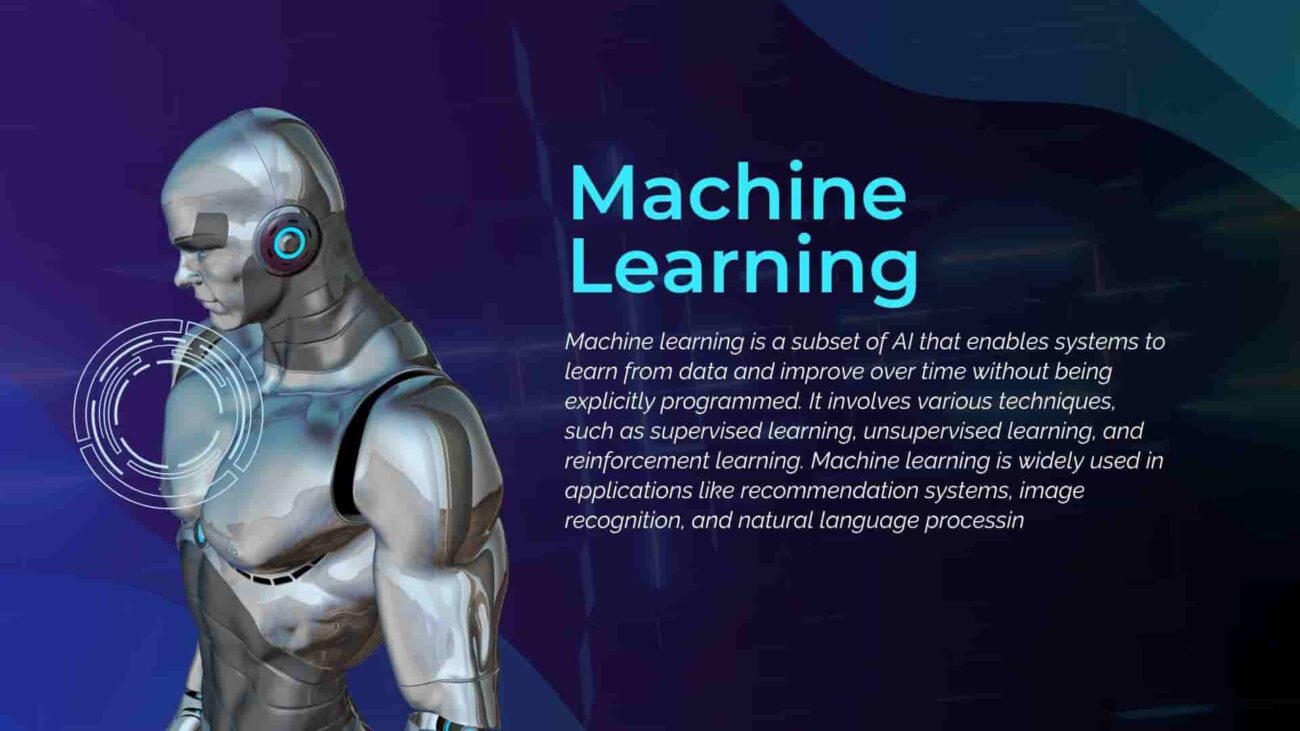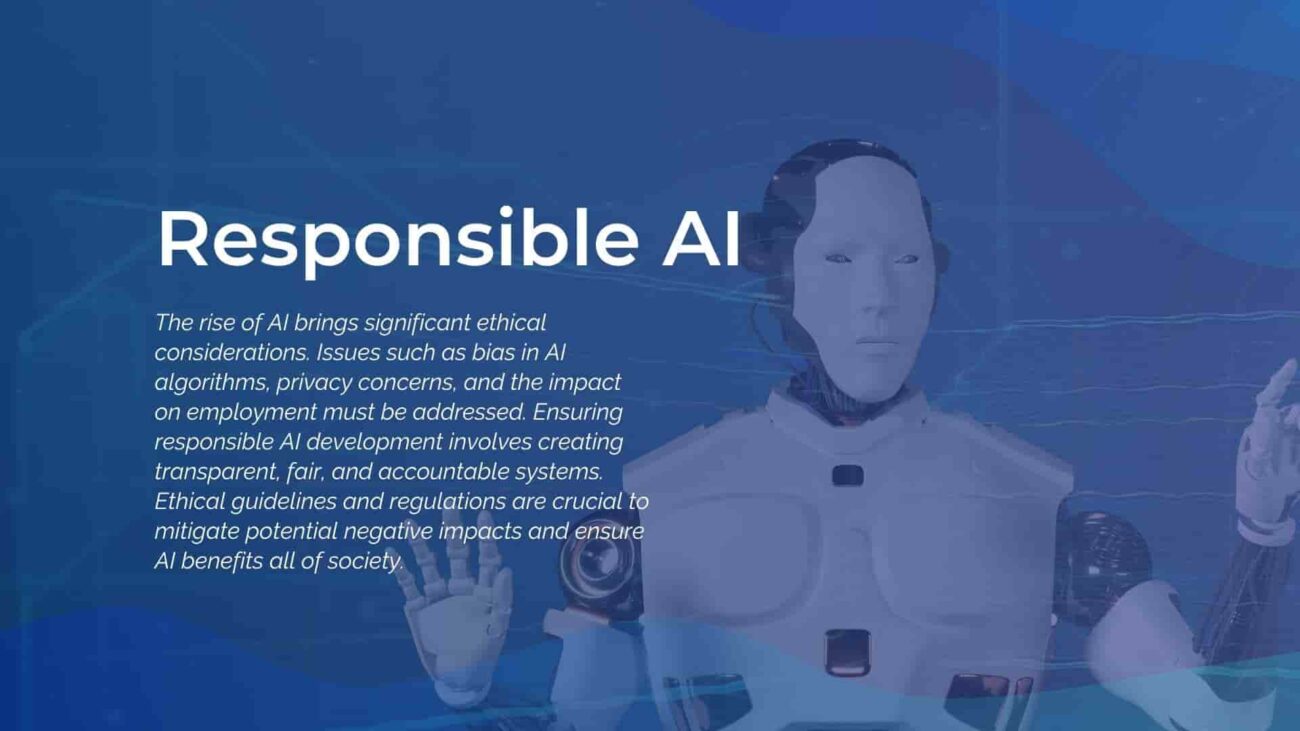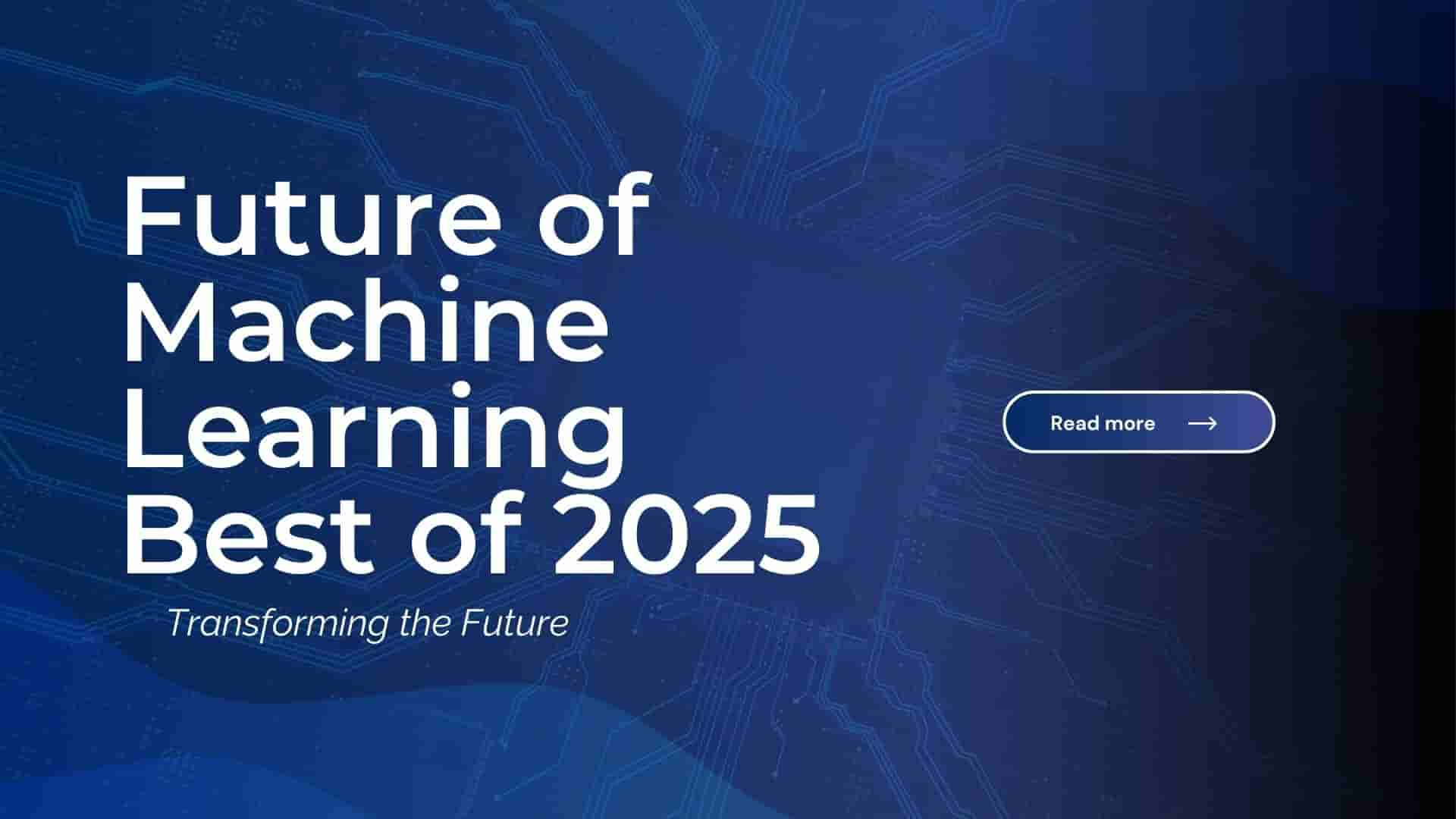Types of Machine Learning
Machine learning comes in three main flavors, each with its own personality:
- Supervised Learning: This is ML with a teacher. The algorithm learns from labeled data, like using past house sales to predict future prices. It’s like studying with a textbook and a strict professor checking your work.
- Unsupervised Learning: No labels, just vibes. The algorithm digs through data to find hidden patterns, like grouping customers by shopping habits. It’s the detective of ML, solving mysteries without a guide.
- Reinforcement Learning: Think trial-and-error on steroids. The algorithm learns by experimenting, like a robot figuring out how to walk by falling a few (hundred) times. It’s all about rewards and consequences.
These types form the foundation of machine learning, and they’re evolving fast. Let’s explore the trends driving the future of machine learning in 2025 and beyond.
Current Trends in Machine Learning
The future of machine learning is moving faster than a viral dance video on social media. In 2025, several trends are reshaping how ML is used across industries and in our daily lives. Here’s a detailed look at what’s hot right now:
Automated Machine Learning (AutoML)
AutoML is like giving machine learning a “set it and forget it” button. It automates complex tasks like model selection, hyperparameter tuning, and feature engineering, making ML accessible to non-experts. Imagine a small business owner building a custom ML model without a PhD in data science—AutoML makes it possible.
Generative AI Explosion
Generative AI is the rockstar of machine learning right now. Tools like ChatGPT, DALL-E, and MidJourney create content—text, images, music, even videos—from scratch. In 2025, generative AI is expected to dominate, powering virtual assistants that sound more human than your best friend and design tools that whip up logos faster than you can say “Canva.”
Edge AI and IoT Integration
Edge AI is bringing machine learning to the devices you use every day, like your phone, smartwatch, or even your fridge. Instead of sending data to the cloud, edge AI processes it locally, saving time, bandwidth, and energy.
Explainable AI (XAI)
Machine learning models can be like mysterious black boxes, spitting out answers without explaining how they got there. Explainable AI (XAI) is changing that by making models transparent and understandable.
For example, a bank using ML to approve loans can use XAI to explain why an application was rejected, reducing disputes and building trust. As regulations like the EU’s AI Act demand more transparency, XAI will be a cornerstone of the future of machine learning, ensuring algorithms aren’t just smart but also fair and accountable.

Quantum Machine Learning
Quantum computing sounds like something straight out of a sci-fi blockbuster, but it’s real—and it’s coming for machine learning. Quantum machine learning uses quantum computers to solve complex problems exponentially faster than classical computers.
Federated Learning
Federated learning is a privacy-first approach to machine learning. Instead of sending your data to a central server, federated learning trains models across devices—like your phone or laptop—while keeping data local. As privacy concerns grow, federated learning will be a key player in the future of machine learning, especially for apps handling sensitive data like health or financial records.
AI-Driven Hardware
Machine learning needs serious computing power, and specialized hardware is stepping up. Google’s Tensor Processing Units (TPUs) and NVIDIA’s GPUs are designed to handle ML’s heavy lifting, making models faster and more efficient.
Future Applications of Machine Learning
The future of machine learning isn’t just about fancier algorithms—it’s about transforming every facet of our lives. From healthcare to entertainment, here’s how ML will reshape industries by 2030 and beyond:
Healthcare: Precision Medicine and Beyond
Machine learning is turning doctors into superheroes with x-ray vision. By analyzing genetic data, medical records, and lifestyle factors, ML can predict diseases like cancer or Alzheimer’s before symptoms even appear.
Transportation: Autonomous Vehicles and Logistics
Self-driving cars are just the beginning. Machine learning is powering autonomous drones, trucks, and even flying taxis (yes, they’re coming!).
ML is also optimizing logistics. From predicting delivery delays to optimizing shipping routes, machine learning is making supply chains smarter and greener. Imagine drones delivering your pizza in 15 minutes, guided by ML algorithms that dodge bad weather and traffic. The future of machine learning in transportation is about speed, safety, and sustainability.
Read more: ChatGPT Tips for Students – Homework Done Fast! Best of 2025
Education: Personalized Learning for All
Gone are the days of one-size-fits-all classrooms. Machine learning is creating adaptive learning platforms that tailor lessons to each student’s pace and style. In underserved regions, ML-powered apps could bring quality education to millions, leveling the playing field. The future of machine learning in education is about empowerment and equity.
Entertainment: AI as the Ultimate Creator
Machine learning is rewriting Hollywood’s playbook. Generative AI can create movie scripts, compose music, and even generate CGI characters that look real. Netflix already uses ML to recommend shows, but by 2030, it could produce entire films tailored to your tastes—imagine a rom-com written just for you!
Finance: Smarter Investing and Fraud Detection
In finance, machine learning is a money-making machine. Algorithms analyze market trends, news, and even social media sentiment to predict stock prices with uncanny accuracy. Robo-advisors like Betterment use ML to build personalized investment portfolios, making wealth management accessible to the masses.
ML is also a superhero in fraud detection. By spotting unusual patterns in transactions, it catches scams before they drain your bank account. Banks like JPMorgan Chase use ML to save billions annually by preventing fraud. The future of machine learning in finance is about smarter decisions and tighter security.
| Industry | ML Application | Impact |
|---|---|---|
| Healthcare | Precision Medicine | Early diagnosis, personalized treatments |
| Transportation | Autonomous Vehicles | Fewer accidents, efficient logistics |
| Education | Adaptive Learning | Customized education for all |
| Retail | Hyper-Personalization | Better customer experiences |
| Entertainment | Generative Content | Custom films, music, and games |
| Finance | Fraud Detection | Enhanced security, smarter investing |
Challenges in Machine Learning
The future of machine learning is bright, but it’s not all smooth sailing. Here are the biggest hurdles ML faces as it evolves:
Data Quality and Bias
Machine learning is only as good as the data it’s trained on. Poor-quality data—like incomplete or outdated records—can lead to garbage predictions. Worse, biased datasets can perpetuate inequality.
Companies are investing in data cleaning and bias detection tools, but it’s a complex problem. For instance, an ML model used for hiring could unintentionally favor men if trained on male-dominated resumes. The future of machine learning depends on addressing these biases to create equitable outcomes.
Computational Costs and Sustainability
Training large ML models is like running a marathon on a supercomputer—it’s expensive and energy-intensive.
Solutions like energy-efficient chips and cloud-based training are helping, but costs remain a barrier, especially for smaller organizations. The future of machine learning will need greener algorithms and hardware to keep up with demand without breaking the planet.
Scalability and Real-World Deployment
Building an ML model in a lab is one thing; scaling it for millions of users is another. Real-world applications need robust infrastructure to handle massive data volumes and ensure reliability. The future of machine learning will rely on distributed systems and edge computing to bring ML to the masses.
Regulatory and Legal Hurdles
As machine learning takes on bigger roles in society, governments are stepping in with regulations. The EU’s AI Act, for instance, sets strict rules for high-risk AI systems, like those used in healthcare or hiring. Navigating this patchwork of global laws is a headache for companies deploying ML at scale.
Compliance isn’t just about avoiding fines—it’s about building trust. The future of machine learning will need standardized regulations that balance innovation with accountability, ensuring ML benefits everyone without causing harm.
Talent Shortage
Machine learning is a hot field, but there aren’t enough skilled professionals to meet demand. Data scientists, ML engineers, and AI ethicists are in short supply, creating a bottleneck for innovation.
In the meantime, AutoML and low-code platforms are helping non-experts contribute, but the future of machine learning will depend on a robust pipeline of skilled talent to drive progress.
How Machine Learning Will Shape Our World
The future of machine learning isn’t just about tech—it’s about reshaping society in profound ways. Here’s how ML will impact our lives by 2035:
Workforce Transformation
Machine learning will automate repetitive tasks, from data entry to customer service, changing the job landscape.
ML will also enhance jobs rather than replace them. For instance, architects can use ML to optimize building designs, while marketers can create hyper-targeted campaigns. The future of machine learning in the workforce is about collaboration between humans and machines.
Environmental Impact
Machine learning is a secret weapon against climate change. By optimizing energy use, predicting weather patterns, and improving renewable energy systems, ML can make our planet greener. Google’s DeepMind, for example, uses ML to cut data center energy use by 40%. In agriculture, ML-powered drones can monitor crops to reduce pesticide use, boosting sustainability.
However, ML’s energy demands are a double-edged sword. The future of machine learning must prioritize eco-friendly algorithms and hardware to maximize its environmental benefits without adding to the carbon footprint.
Social Connectivity and Equity
ML-powered social platforms will get better at connecting people. Imagine AI matchmaking friends based on shared interests or virtual reality meetups tailored to your personality. But there’s a catch—overreliance on algorithms could deepen digital divides if access isn’t equitable. The future of machine learning must ensure everyone, from urban techies to rural communities, can benefit from smarter connectivity.
Read more: The Future of Machine Learning in 2025 [Top Trends]
Ethical Considerations in Machine Learning
With great power comes great responsibility, and machine learning is no exception. Ethical concerns are as critical as technical breakthroughs in shaping the future of machine learning. Here’s what’s at stake:
Privacy and Data Security
Machine learning thrives on data, but collecting personal info raises red flags. Regulations like GDPR and CCPA are pushing companies to prioritize user privacy, with hefty fines for non-compliance. Future ML systems will need to balance data needs with ethical practices, like anonymizing user information or using federated learning to keep data local.
For example, healthcare ML models need patient data to predict diseases, but leaks could expose sensitive information. The future of machine learning depends on robust encryption and privacy-first approaches to maintain public trust.
Bias and Fairness
Biased algorithms can perpetuate inequality, sometimes with serious consequences. For instance, an ML model used for hiring might favor certain demographics if trained on biased data. Similarly, predictive policing tools have faced criticism for targeting minority communities unfairly. Addressing bias requires diverse datasets, regular audits, and inclusive development teams.
The future of machine learning hinges on creating fair models that don’t amplify societal inequalities. This means involving ethicists, sociologists, and diverse voices in the design process to ensure ML serves everyone equitably.
Accountability and Transparency
Who’s responsible when an ML model makes a bad call? If an algorithm denies a loan or misdiagnoses a patient, accountability is critical. Explainable AI (XAI) is helping by making models transparent, but more work is needed. The future of machine learning will require clear frameworks for accountability, ensuring humans remain in the loop for high-stakes decisions.

Job Displacement and Economic Impact
While ML creates new opportunities, it also threatens jobs in sectors like manufacturing and customer service. The World Economic Forum predicts AI and ML could displace 85 million jobs by 2025 but create 97 million new ones. The challenge is ensuring workers can transition through reskilling programs. The future of machine learning must include policies to support displaced workers and promote economic equity.
Innovations Driving Machine Learning
The future of machine learning is fueled by cutting-edge innovations that push the boundaries of what’s possible. Here’s a look at the technologies driving ML forward:
Neuromorphic Computing
Inspired by the human brain, neuromorphic chips mimic neural networks to process data more efficiently.
For example, neuromorphic chips could power real-time ML in autonomous vehicles, processing sensor data instantly to avoid obstacles. The future of machine learning will lean heavily on these brain-inspired systems.
AI-Driven Hardware Acceleration
Specialized chips like Google’s TPUs and NVIDIA’s GPUs are supercharging machine learning. These processors are built for the heavy math ML requires, cutting training times from weeks to hours. As ML models grow larger, expect more investment in custom hardware to keep up with demand.
Neuromorphic and quantum processors are next, promising to make ML faster, cheaper, and greener. The future of machine learning will rely on these hardware breakthroughs to scale efficiently.
Machine Learning in Education and Training
Beyond applications in schools, machine learning is transforming how we train the next generation of professionals. Online platforms like Coursera and Udemy use ML to recommend courses based on your career goals and learning style. In corporate settings, ML-driven training programs adapt to employees’ skill levels, ensuring efficient upskilling.
By 2030, ML could personalize training for millions, closing the skills gap in fields like AI and data science. The future of machine learning in education is about lifelong learning, accessible to all.
Machine Learning and Societal Impacts
Machine learning’s influence extends beyond industries to the fabric of society. Here’s how ML will shape our world:
Urban Planning and Smart Cities
ML is making cities smarter. By analyzing traffic, energy use, and population data, ML can optimize urban planning, reducing congestion and pollution. For example, Singapore uses ML to manage traffic flow, cutting commute times. In the future, smart cities powered by ML could improve quality of life for billions.
Healthcare Accessibility
In remote areas, ML-powered telemedicine platforms can diagnose diseases and recommend treatments, bringing healthcare to underserved communities. By 2035, ML could bridge the gap between rural and urban healthcare, ensuring everyone has access to quality care.
Cultural Preservation
ML is helping preserve languages, art, and traditions. For instance, Google’s Arts & Culture project uses ML to digitize artifacts, making them accessible globally. In the future, ML could translate endangered languages or recreate lost cultural works, keeping heritage alive.
Summary
The future of machine learning is a thrilling blend of innovation, opportunity, and responsibility. From healthcare’s precision medicine to transportation’s autonomous vehicles, ML is set to revolutionize industries, making life smarter, safer, and more sustainable. Trends like AutoML, generative AI, and quantum computing are pushing boundaries, while challenges like bias, costs, and regulations demand solutions.
Frequently Asked Questions
What is the future of machine learning?
The future of machine learning includes advancements in AutoML, generative AI, and quantum computing. It will revolutionize industries like healthcare and transportation with personalized, efficient solutions while tackling challenges like bias and privacy.
How will machine learning impact jobs?
ML will automate repetitive tasks but create new roles in AI development, ethics, and oversight. Upskilling in data science or AI programming will be crucial to thriving in the ML-driven job market.
Is machine learning ethical?
ML can be ethical if designed with fairness, transparency, and privacy in mind. Addressing bias, ensuring data security, and using explainable AI are key to building trustworthy ML systems.
Can machine learning solve climate change?
ML can optimize energy use, predict weather, and improve renewables, making it a powerful tool against climate change. While not a complete solution, it supports sustainability when paired with policy and action.

